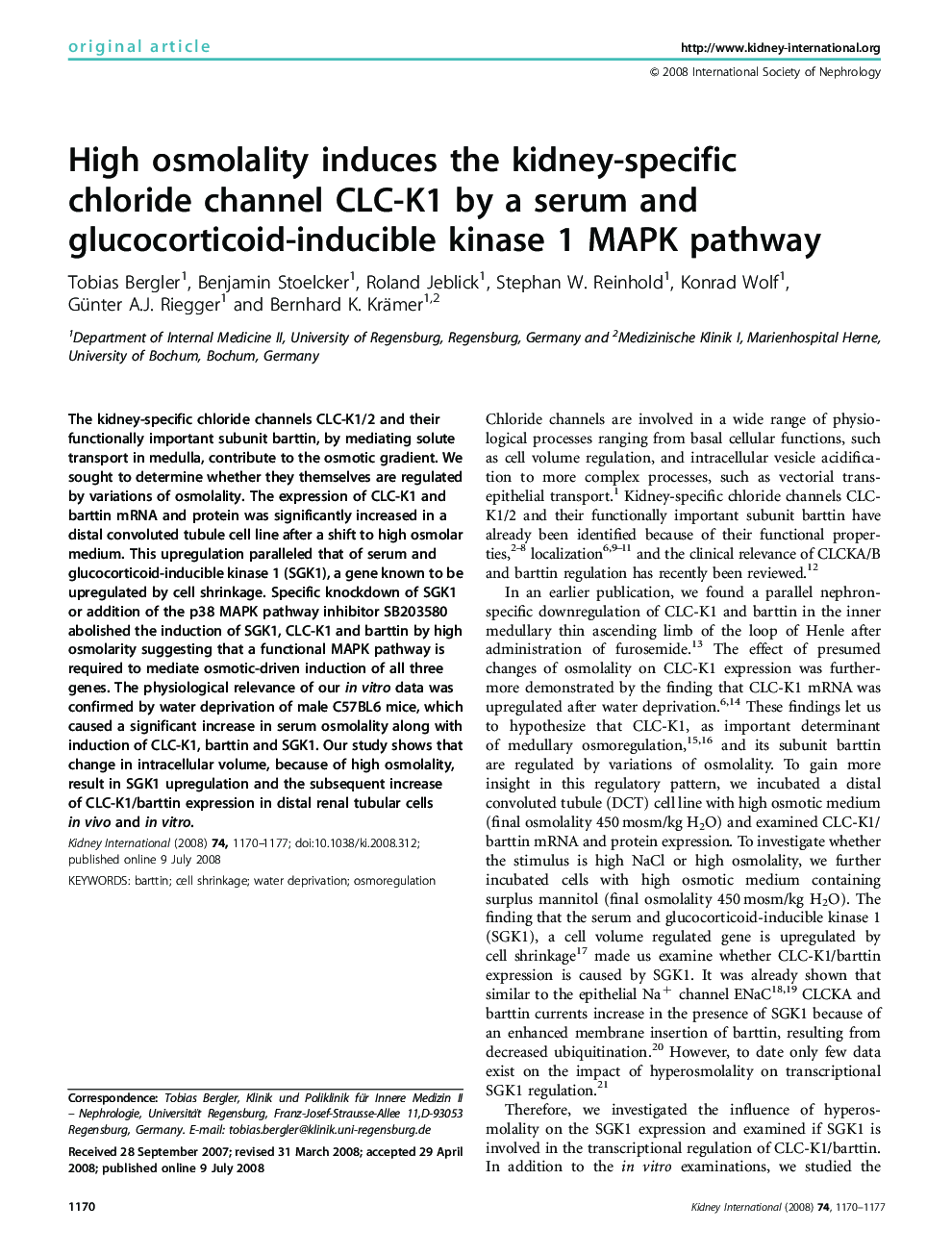| کد مقاله | کد نشریه | سال انتشار | مقاله انگلیسی | نسخه تمام متن |
|---|---|---|---|---|
| 3884966 | 1249496 | 2008 | 8 صفحه PDF | دانلود رایگان |

The kidney-specific chloride channels CLC-K1/2 and their functionally important subunit barttin, by mediating solute transport in medulla, contribute to the osmotic gradient. We sought to determine whether they themselves are regulated by variations of osmolality. The expression of CLC-K1 and barttin mRNA and protein was significantly increased in a distal convoluted tubule cell line after a shift to high osmolar medium. This upregulation paralleled that of serum and glucocorticoid-inducible kinase 1 (SGK1), a gene known to be upregulated by cell shrinkage. Specific knockdown of SGK1 or addition of the p38 MAPK pathway inhibitor SB203580 abolished the induction of SGK1, CLC-K1 and barttin by high osmolarity suggesting that a functional MAPK pathway is required to mediate osmotic-driven induction of all three genes. The physiological relevance of our in vitro data was confirmed by water deprivation of male C57BL6 mice, which caused a significant increase in serum osmolality along with induction of CLC-K1, barttin and SGK1. Our study shows that change in intracellular volume, because of high osmolality, result in SGK1 upregulation and the subsequent increase of CLC-K1/barttin expression in distal renal tubular cells in vivo and in vitro.
Journal: Kidney International - Volume 74, Issue 9, 1 November 2008, Pages 1170–1177